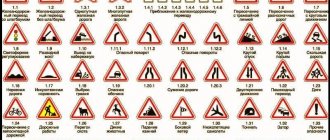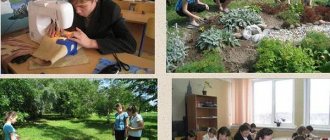Presentation for the lesson
Back forward
Attention! Slide previews are for informational purposes only and may not represent all the features of the presentation. If you are interested in this work, please download the full version.
Project type:
group, long-term, research and creative.
Educational area:
"Cognitive Development".
Performers:
a group of children from a preparatory speech therapy group.
Project participants:
children, educators, parents of students, additional education teacher Potapova E.V., employee of Energoauditekspert LLC, project manager Kasmynin I.A.
Relevance of the project
The problem of reasonable use of energy is one of the main problems of modern humanity. On the one hand, electricity is the highest achievement of modern civilization. She replaced the light of kerosene lamps and candles with the light of electric bulbs, brought electric heaters, air conditioners, TV and radio, a computer and the Internet into our house. However, people should not only appreciate the results of human activity, but also try to spend energy resources more economically and, if possible, limit their needs. After all, limited energy resources
,
the negative impact on the environment associated with its production - all these factors lead to the conclusion that it is wiser to reduce
energy
rather than constantly increase its production.
The leading role in this process is played by environmental education
,
instilling the skills of caring for
energy resources.
Teachers have an important task
to educate a new generation that
will understand the importance of saving
energy resources ,
because caring for them guarantees the environmental purity of the world around us.
Description of the problem:
Children of preschool age are not sufficiently oriented in the evolution of modern objects of the man-made world, do not have a clear idea of why a person changes objects that he used in the past and do not have knowledge about the need for respect for human achievements and, as a result, the efficient use of all resources and electricity in particular. They also do not know how to establish a cause-and-effect relationship between the influence of man and the products of his activities on nature; they do not know that the Earth’s resources are not infinite and are difficult to restore.
Idea for solving a research problem:
To
help reveal to children the evolution of light sources, to show
the need for respect for the inventions of modern humanity and, as a result, saving energy, it was decided to create a model together with the children.
It will be possible to clearly demonstrate the history of improving lighting devices from a torch and a torch to a modern LED lamp, as well as energy-saving posters drawn and developed by children .
Objective of the project:
Formation in preschool children of initial information about the rational use of electricity and the education of an elementary culture of energy saving, the development of a retrospective and prospective view of the objects of the man-made world.
Project objectives:
For children:
- To develop in children an interest in the problem of saving energy resources, to develop initial skills in their rational use.
- To form in preschoolers ideas about electricity, where it “lives”, how it gets into homes and is used by people.
- To acquaint children with the past and present of lighting devices, with the process of their transformation by man.
- Activate search and cognitive activity, intellectual abilities, the ability to compare facts, phenomena, objects, compare and analyze them, mental activity, creative abilities.
- Involve preschoolers in useful energy saving activities.
For teachers:
- Increase the level of professional competence, enrich knowledge on current issues of energy saving.
- Strengthen the skills of organizing project activities with preschool children.
- Create conditions for familiarizing students with energy resources through enriching the subject-development environment and a system of events with students, their parents and public organizations (Energoauditexpert LLC).
For social partners:
- To promote interest in the content of energy-saving work with children
and participation in joint
events . - Increase the pedagogical competence of parents, enrich their educational experience, and promote the harmonization of parent-child relationships.
- Replenish knowledge on energy saving, be more responsible about the consumption of energy resources.
Brief summary of the project
Organizational and preparatory part: problem statement, information search.
For teachers and parents:
- Selection of methodological and fiction literature.
- Enrichment of the subject-development environment (retrofitting the experimentation corner, selection of didactic and board-printed games, selection of literature in the book corner, exhibits for organizing the exhibition “From a Splinter to a Light Bulb”).
- Conducting consultations for teachers and parents “Energy saving is everyone’s concern!”
For children:
- Thematic conversations “Why do we need electricity”, “How did the light bulb appear”, “Saving electricity - saving the planet”, “The meter visiting the guys”.
- Viewing multimedia presentations “Journey into the past of the light bulb”, “Where electricity comes to us from”
- Safety talk “Caution – electrical appliances!”
- Reading fiction, conversations on the content: Myths of Ancient Greece “Prometheus”, R.G. Podolny “How Man Tamed Fire,” a cycle of poems about the light bulb and electricity.
- Experimental research activities, experiments, natural science observations “Why is the light bulb shining?”, “Revived hair”, “Stubborn balls”, “Help Cinderella”, “Such different sources of counting”.
- Didactic games, travel games, game tasks on the topic of the project.
- Meeting with interesting people: situational conversation “Electricity lives everywhere” with the parent of one of the students, I.A. Kasmynin. (project manager of Energoauditeksper LLC).
Main part, creation of project products
- Productive activities (drawing, modeling, appliqué, modeling) on the topic, making a model.
- Exhibitions of drawings “The Cheerful Light Bulb”
- Exhibition of energy-saving posters “Save wisely!”
- Composition and presentation of fairy tales “The Adventure of the Light Bulb”
- Organization of the exhibition “From a Splinter to a Light Bulb”»
- Visit to the Lights of Moscow Museum
Project defense, summing up
- Creation and presentation of an energy-saving layout “The Adventure of a Light Bulb.”
- Drawing up methodological recommendations for teachers and parents (information booklets on energy saving).
- Defense of the project at a scientific conference for preschoolers “First Steps into Science.”
Results obtained from the project
- Systematization of preschoolers' knowledge about the properties and actions of various predecessor objects of modern light sources and lighting devices, familiarization with the history of the electric light bulb, children learned to appreciate the results of human activity and the achievements of modern civilization.
- Expanding horizons about energy resources and the culture of energy saving, developing energy-saving behavior skills among students and their parents.
- Development in pupils of curiosity, creativity, cognitive activity and the ability to use acquired knowledge in various activities and behavior.
- Increasing the level of pedagogical competence of teachers, developing a didactic complex (synopses of direct educational activities, entertainment scenarios, didactic games, experiments, visual aids - layout).
Today, society faces a very important task - to change the stereotype in the minds of every citizen that natural energy resources are inexhaustible. It is difficult to change the thinking of adults. But a preschool child can be helped to learn the basics of ecological culture, a careful and caring attitude towards the riches of the earth, towards everything that surrounds him.
In search of the most effective methods for solving this problem, we settled on the project method. It helps support children's cognitive initiative, develop the creative and communicative abilities of preschoolers, ensures the integration of educational areas and the combination of interests of all participants in the educational process: teachers, children, parents. It is the project method that makes it possible, in enthusiastic, active joint activities, to introduce each preschooler to such complex concepts as “save”, “preserve”, “electricity”, “natural resources” and introduce children to the values of environmental culture. Our experience has shown that, due to the clarity of thinking of preschool children, the results of knowledge of the world around them are best realized in productive activities and are embodied in real products. Therefore, we decided to make a practice-oriented model as the final product of children’s search and research activities on the problem of energy saving. The layout is multifunctional and its use in work can be diverse. It can serve as both an object and a means of children’s activities, makes it possible to generalize and systematize children’s knowledge and at the same time acts as a way of developing cognitive interest, aesthetic feelings and creative abilities.
And of course, it is important to understand that only targeted work on instilling a culture of energy saving in preschoolers will bear fruit in the adult lives of today’s children; they will be able to become more active helpers of public initiatives aimed at preserving and increasing the resources of our country.
It’s not very easy to make energy saving lessons for children interesting and fun. This is probably why queries related to energy saving classes are very common in search engines.
Today, while looking at the statistics of transitions to my website using search phrases, I again discovered that someone was looking for “classes in the senior group on the topic of energy saving.”
This was the first reason for writing this article.
The second reason is International Energy Saving Day, which perhaps not everyone knows about. About the fact that energy saving
important for preserving the environment, you've probably heard. They began to talk about this more and more often on radio and television.
“Energy saving is everyone’s concern.” Entertainment for middle group children (4–5 years old)
Svetlana RAIBE, music director of the highest category, State Educational Institution “Nursery-Garden No. 14 in Smorgon”, Grodno region
Program objectives: to form in children an understanding of the rules of frugality and economy, to develop the ability to establish cause-and-effect relationships and dependencies, and to apply them in everyday life; develop creativity, imagination, curiosity, independent judgment; cultivate economically significant qualities (thrift, hard work, thrift)
Materials and equipment : multimedia, costume (adult) of Masya’s fixie, a city built from modules, illustrations for the game “You can - you can’t”, a flashlight for the game “Wires”, lanterns made from hoops for the plot dance “Lanterns”; for theatricalization - animal caps (mice, frogs, bunnies, foxes, bears), a window made of polystyrene foam, an energy-saving light bulb; children's hammer, mouse broom, children's kitchen with faucet, electronic records for playing games.
Progress of the event
Musical director. Hello guys! I am glad to welcome you to our music hall. Look how many guests we have in the hall. Let us greet them musically.
Greetings
Musical director. Guys. Do you like cartoons? (We love it!)
Musical director. Who can tell me what kind of cartoon this is?
Multimedia song about Fixiki and Fixik Masya enters the hall.
Masya.
I am Fixik, very small, but remote! I smile playfully - I am smart, kind and handsome!
– And I’m also from the city of Economy! And my good friends live in that city, but lately nothing has been known about them. I'm very worried, maybe something bad happened to them? But it’s also very scary to go alone.
Musical director. Guys, let's help Masya. (Let's)
Musical director . Close your eyes and repeat the magic words.
I’ll close my eyes, I’ll turn around myself, I’ll find myself in a land of economy!
Children perform, magical music sounds. When the children close their eyes, the music director moves the screen aside, and there a city is built from modules.
Educator. Look, guys, we are in the city of Savings! But to get there, we need to solve riddles.
In this white chest we store food on the shelves. It’s hot outside. There’s a refrigerator in the chest. (Fridge)
He inhales a lot of dust to keep us healthy. (Vacuum cleaner) V. Fetisov
Hisses with displeasure, Bites painfully, It’s dangerous to leave him alone. You have to get along with him, And you can pet him. But you shouldn’t pet him! (Iron) V. Azbukin
A house on legs, There is a window in the middle. The window will light up - A movie will appear. (TV)
Masya. Well done guys, you guessed the riddles correctly, I suggest you sit down.
Educator. Tell me, what do all these items have in common? (They have a cord and plug that plugs them all into an outlet.)
Educator . These are electrical appliances. They are called that because they run on electricity.
Masya. What other electrical appliances do you know? (Washing machine, microwave, electric kettle)
Educator. What is electricity? Tell us, fixie Masya.
Masya. Electricity is like a lot of little angry bees running around on the wires and making the appliances work.
Educator. To make it clearer, let's play a game.
Game "Wire"
Educator. I will be the socket, and you will be the wire. Children hold hands, line up, and squat down. At one end of the wire there is a socket (teacher), at the other there is an electrical appliance (child). The teacher takes the hand of the last child (electricity started flowing through the wire). The children take turns standing up, creating a wave motion when the last child stands up (turns on the flashlight).
Masya. It is impossible to see the current, and there is no point in trying. Electricity is invisible. You should always remember that children should not touch sockets, plugs, or turn electrical appliances on and off. This can only be done by adults.
Educator. What should you do to save energy?
Children's answers:
– always turn off the lights when you leave the house;
– do not turn on many electrical appliances;
– do not turn on the lights in sunny weather;
– do not leave the radio and TV on if you are no longer listening or watching them.
Masya. You can also use flashlights to save electricity. Look at the lanterns in my city.
Dance of the Lanterns
Educator. Masya, you can save not only energy, but also water, heat and gas, listen.
1 Take care of the light, people! We have no life without light. If there were no light, We would live - I don’t know how? A person would not have any blessings for life. (I. Kuntsevich)
2 Close the tap tightly so that the ocean does not leak out. Don’t waste water - know how to value water . ( V. Viktorov)
3 A drop flows out of the tap in vain - Throwing our money down the drain. Just a drop, people, stop! Save rivers, lakes, seas! (R. Skorobukh)
4 Adults and children know: Gas is our best friend: We need it in every home, The world around us is reliable with it.
All children.
We understand all this and save resources!
Educator. Guys, if we save money, we can buy a lot of useful things.
Fizminutka
If you save up money, (“They count the money”) You can buy a lot: (“They put the money in the wallet”) There are candies - first grade. (Make a spring, hands on the belt) Economics will help you save money correctly. (Lean left and right, back and forth, hands on the belt). This is why, friends, we need, I think, to be friends with the economy and what we want to buy. (Perform jumps in place with clapping) (D. Chernova (reworked))
Masya. Well done boys! And now I want to check with you whether you know whether this can be done or not. If possible, you run to the green house, if not, then to the red one. (Houses near the central wall in the city).
– The child did not turn off the iron and went for a walk outside. (You can also show pictures) – Dad watched the TV and turned it off. – He washed himself and forgot to turn off the tap. – When leaving the house, we turned off the lights. – It’s frosty outside, and the window is not sealed. – Mom cooked food and turned off the gas stove.
Masya. Great guys, you are so attentive!
Educator. Masya, what kind of beautiful house is this?
Masya. And this is a mansion, but who lives in it?
Musical director.
The guys and I know. (The teacher puts on hats) We want to show you a show about energy saving. The fairy tale “Teremok in a new way” Invites adults and children to visit!
All the children sing:
There is a little mansion in a field, It is neither low, nor high, nor tall. Like a mouse running across a field, across a field, it stops at the door and knocks.
Mouse. There is no one, I will live here. I'll go put things in order. (Takes a broom and sweeps.
All the children sing:
There is a little mansion in a field, It is neither low, nor high, nor high. Like a frog running across a field, a field, Stops at the door and knocks.
Frog. Knock Knock! Who lives in a little house, who lives in a low one?
Mouse. I'm a little mouse, and who are you?
Frog . And I'm a frog. Let's live together, I'll fix the tap. You see yours is faulty, a lot of water is wasted. And we need to save water.
All the children sing:
There is a little mansion in a field, It is neither low, nor high, nor tall. Like a bunny running across a field, a field, it stops at the door and knocks.
Bunny. Knock Knock! Who lives in a little house, who lives in a low one?
Mouse. I'm a little mouse.
Frog. I'm a frog frog.
Together . And who are you?
Bunny. I'm a runaway bunny. Let's live together. I’ll insulate your window so that all the heat doesn’t escape through the cracks. (Insulates)
All the children sing:
There is a little mansion in a field, It is neither low, nor high, nor tall. Like a fox running across a field,
Fox. Knock Knock! Who lives in a little house, who lives in a low one?
Mouse. I'm a little mouse.
Frog. I'm a frog frog.
Bunny. And I'm a runaway bunny.
Together . And who are you?
Fox. And I am a fox-sister. Let's live together. I have a light bulb that saves electricity. (Shows)
All the children sing:
There is a little mansion in a field, It is neither low, nor high, nor tall. Like a bear running across a field, a field, Stops at the door and knocks.
Bear . Knock Knock! Who lives in a little house, who lives in a low one?
Mouse. I'm a little mouse.
Frog. I'm a frog frog.
Bunny. And I'm a runaway bunny.
Chanterelle. I'm a little fox sister.
Together . And who are you?
Bear. I'm a clumsy bear. Let's live together. I’ll fix the roof, it’s completely leaky (Knocks with a hammer).
Musical director.
The whole world needs to try, So that you don’t be left in the house without heat. And if so, get down to business, So that the roof in the house survives . (Sh. Ikramutdinov (reworked))
Heroes.
Take care always, take care everywhere, Take care of you, him and me! The more we save together, the better we will all live!
Educator.
So we learned about how animals take care of their common home, water, warmth, electricity - there are no wiser people in the world!
Masya. You guys are great, you know everything, stay in my city of Fixikov.
Educator. Thank you, Masya, we would love to, but it’s time for us to return to kindergarten. We close our eyes and repeat the magic words.
I’ll close my eyes, I’ll turn around myself, I’ll find myself in kindergarten.
Educator. Here we are in the garden, it’s time for us to return to the group. Let's say goodbye to everyone.
Share link:
Methodological materials for lessons on energy saving.
To make it interesting for children to learn about ways to save energy,
add a little excitement to your activities! And the result will pleasantly surprise you!
What could be more exciting than gambling? Board games are convenient because they can be played during classes in the classroom, or you can play them together with your child at home.
Today I am sharing with my readers methodological materials for conducting lessons on energy saving, which were developed by teachers and schoolchildren of the Far East - participants in the “Energy and Habitat” competition.
This competition is held as part of the SPIRE project - School Program for the Use of Resources and Energy. You will receive detailed information about the program on the website - https://www.spareworld.org/
As the coordinator of the SPIRE project in the Far Eastern Federal District, I have collected the most interesting developments created by the competition participants. These are games, performances, lesson notes, presentations and videos.
Board games for primary and secondary school students
Board games for primary and secondary school students can be found at this link - https://yadi.sk/d/07S5h3KhC783m.
Part of the playing field for the board game “Save Energy”. Author Druzhinina T.Yu., Nakhodka, Primorsky Territory.
This block includes different games - both the winners of the competition and the participants who did not receive prizes.
I used the game “Save Energy” to start a conversation about energy conservation with my third graders. I devoted two classes to this topic. The result was the video “Where does the light come from in a light bulb?”
You will see how the children played the board game “Save Energy” and how our discussion of the game took place in this video. The game is very simple and understandable. The guys played with pleasure.
I am sure that from the three proposed games you will choose the one that will be interesting to your children.



